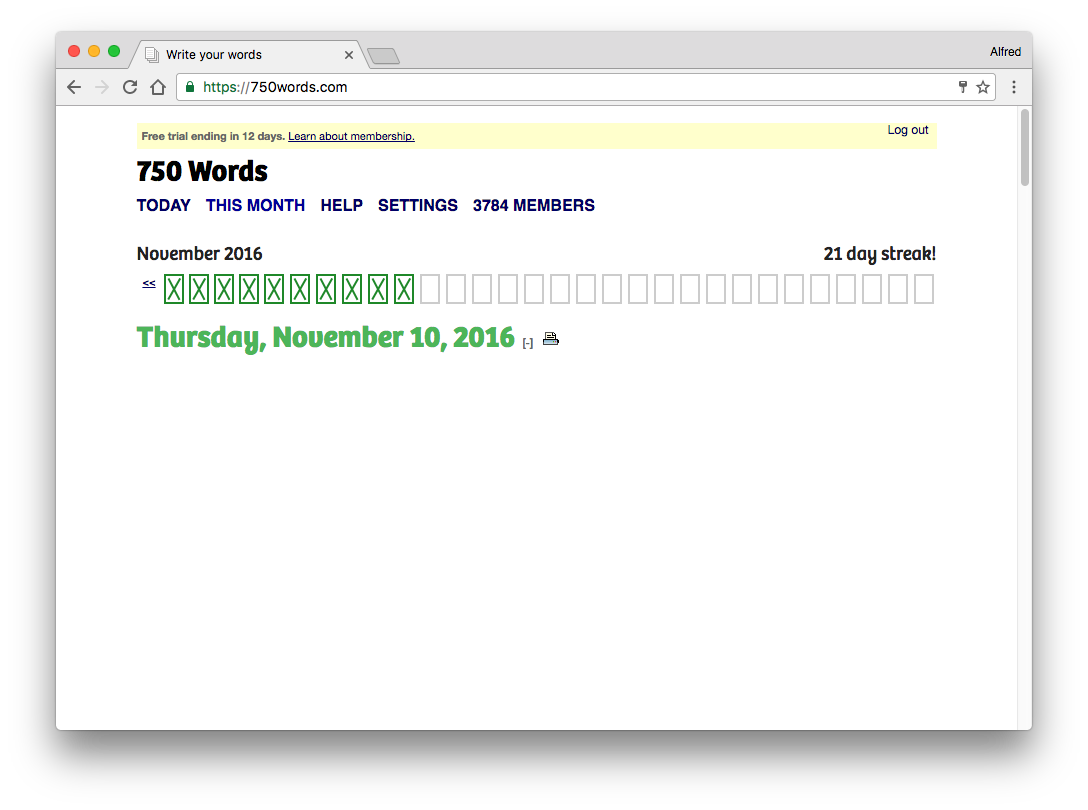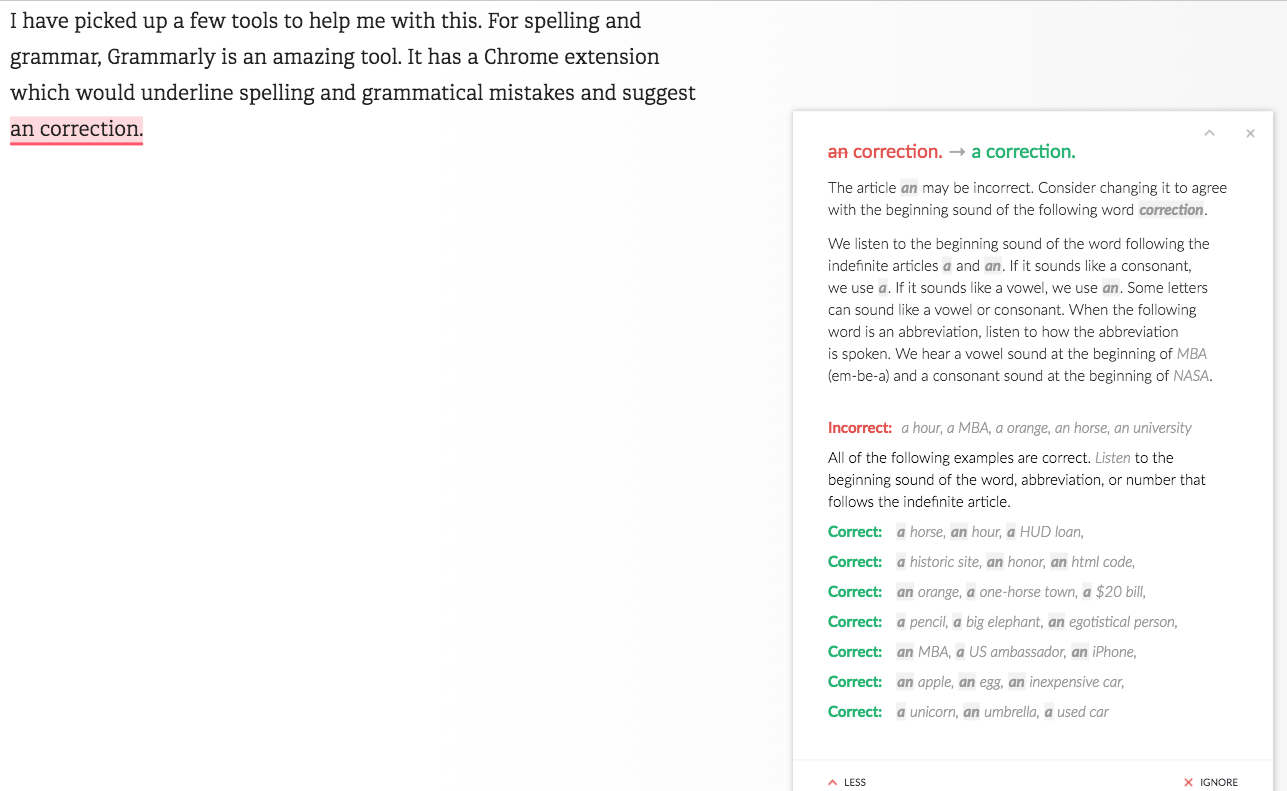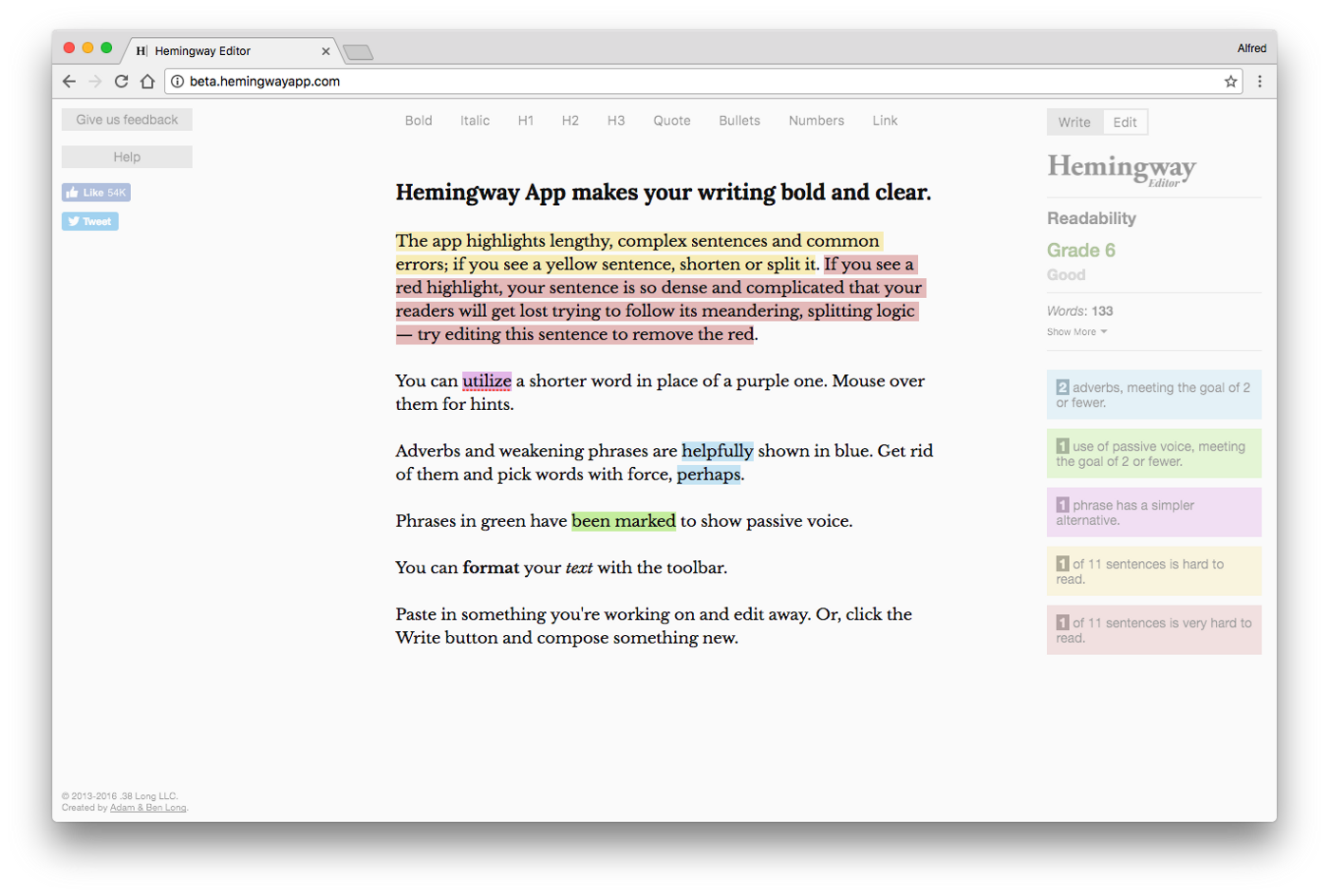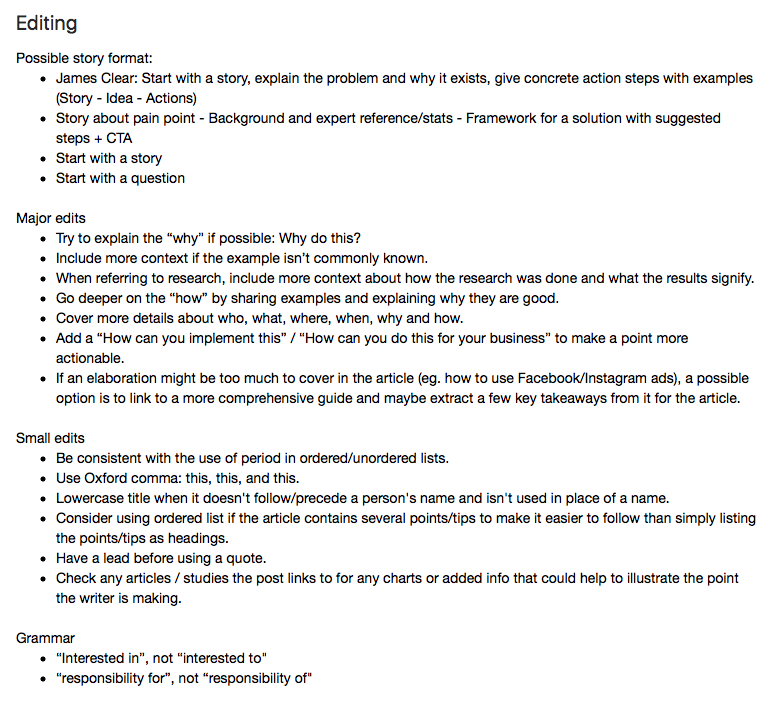marketing
How I’m Learning to Write Better (More Than Just Practice)
Written on 10 November 2016
I didn’t really like to read and write in the past.
There was a period of about five to six years when I didn’t read a single book. For literature classes, I’d search for a summary of the book online in case my teacher wanted me to share my thoughts. Even up till university, I was reluctant to write. I’d avoid selecting classes that required me to write an essay as part of the assessment.
It became a cycle: I avoided writing and became less confident about my writing abilities. Whenever I thought of writing, my lack of confidence would persuade me not write. That didn’t feel great.
Once I started applying for jobs and started on my first job, I realized the importance of writing.
I write when I want to communicating with my teammates, especially in a remote team.
I write when I want to collaborating with others.
I write when I want to convey an idea.
I write when I want to plan things.
Writing is a big part of marketing too — crafting social media post, writing blog posts, copywriting, and more.
What I’m Doing To Improve My Writing
I have tried many times to improve my writing and also given up many times. I know it can be challenging and I’m still working on it. While I don’t consider myself as a great writer, I’d love to share how I have been learning to write better. Hope it’ll be helpful for you!
1. Write everyday
I recently watched a talk by Beth Dunn, Product Editor-in-Chief at HubSpot. She spoke about how to become a better writer. Instead of suggesting we should practice, Beth shared how we could practice every day.
Lower your standard
The idea is to lower our standard of what a blog post is so we aren’t afraid to write. Then, write everyday. Once we get into the habit of writing, we will become better.
I know I have been hesitant to write because I worried that my blog posts would not be as good as I want them to be. I overcame that by writing in private.

A tool that has been helpful for me is 750 Words. It is a simple writing application that encourages users to write in private every day. When I’m not publishing a blog post, I am less worried about the quality and am more comfortable writing. Once I got over the mindset of “If I write, it has to be good quality”, I enjoyed writing more. That has helped me to write more. Beth explained the concept much better than I did so I’d recommend watching her talk:
2. Deconstruct and reconstruct blog posts
Chase Jarvis, one of the best photographers around, once shared how he learns any skill. He shared several great points and one of them stood out to me:
Deconstruct and reconstruct
Chase meant deconstructing other people’s work and reconstructing it himself. As a photographer, that meant looking at other people’s pictures and creating a picture that looks similar with his own techniques. That’s what I have been trying to do with writing. I do it in two steps.
- First, I deconstruct the blog posts of my favorite writers. I try to understand the structure they like to use, their writing tone, and more. For instance, I noticed James Clear likes to start his blog posts with a story, explain a problem and end with possible solutions drawn from the story. I also noticed Kevan Lee and Ash Read make their how-to articles actionable by giving specific suggestions.
- Then, I try to reconstruct the blog posts with my own style. For this blog post, I started with a story of my problem and continued with some actionable solutions. When I know how I’m going to structure a blog post, it is much easier for me to write than having only the idea.
Here’s a post I wrote recently by deconstructing Ash’s news and trends blog posts and reconstructing one with my own style:
New! Shopping on Instagram: Get the Complete Details and What It Means
3. Work on the basics
I always thought it would embarrassing to be using a grammar book. It was until I realized it’s more embarrassing to be making grammatical errors.
My English foundation isn’t that great. I used to dislike English and didn’t pay attention during English classes. So I decided to go back to the basics — spelling, grammar, and sentence structure.
I have picked up a few tools to help me with this:
Grammarly
For spelling and grammar, I’m using Grammarly, an amazing Chrome extension. It underlines spelling and grammatical mistakes and suggests a correction.
If I clicked on “More”, there will be more explanation about the error so that I can understand my mistake better.

Hemingway Editor
For sentence structure, I‘m using a wonderful invention, Hemingway Editor. It’s like a spellchecker but for writing style. It picks up sentences that are hard to read. It highlights words with a simpler alternative and suggests a few replacement words. It also points out adverbs and passive voice to help me write clearer.

I don’t publish every piece I write, and for those that I want to publish, I’d paste them into this app and edit them.
4. Keep a notebook for reference
I know I don’t have a good memory, so I try to record things I’ve learned in my Evernote whenever I can. For writing, that includes possible writing styles and my common grammatical errors.
I’m lucky to have a team lead and a teammate who are great writers and would usually read through and edit my blog posts. They would also usually leave comments to let me know what they have changed. Sometimes, they would also share why they have made those changes. After I go through their edits and comments, I would take notes in my Evernote for future reference.
Here’s how my Evernote note look like at the moment:

The points in the note are based on the Buffer writing style. I imagine they’d be different for everyone depending on our writing style.
When I’d use this note
There are usually two different times I would look at this note:
- The first is before I start writing. I would refer to this note to see if there’s story format I could use for the blog post.
- The second time is after I finish my first draft. I would refer to the “Major edits” section to see if I could expand and improve my first draft. Then, I would tidy up my draft by referring to the “Small edits” section.
Grammarly picks up my grammatical errors as I write so I usually don’t have to edit them at the end. But I write down my common mistakes in the note to help me remember.
Over to you
Whenever I try to improve my writing, the recommendation would usually be “write more”. The suggestion is definitely right. But I found it hard to get started.
After adopting these habits, I have been feeling much more comfortable writing. They have helped me write more and be more confident in my writing abilities. I hope they will do the same for you too!
What are some things you do to help you write more and improve your writing? I’d love to hear from you!